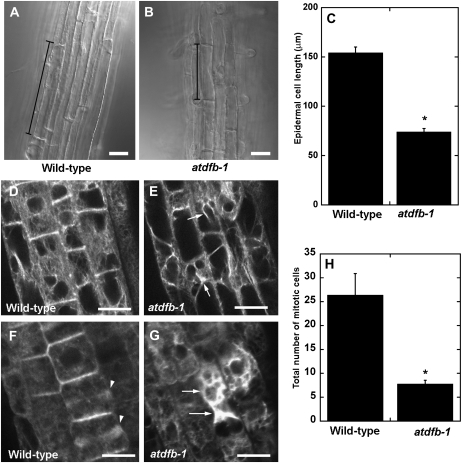Figure 5.
Cell expansion, cell division, and F-actin organization are altered in roots of atdfb-1. A and B, Epidermal cells of wild-type roots in the maturation zone (A) are longer than those of atdfb (B). Black vertical bars mark the end walls of a representative epidermal cell. C, Quantification of epidermal cell length in the maturation zone shows that wild-type cells are more than 2-fold longer than mutant cells. Values are means ± se of 40 epidermal cells from 10 roots. D to G, The actin cytoskeleton in the elongation zone (D and E) and the meristem (F and G) of the wild type and atdfb-1. Note the bundling of F-actin in mutant root cells (arrows in E and G). The meristem region of wild-type roots is enriched in F-actin-labeled phragmoplasts (arrowheads in F) but absent in atdfb-1 (G). H, The number of mitotic cells is significantly reduced in roots of atdfb compared with the wild type. Values are means ± se of five root tips. Asterisks in C and H indicate statistically significant differences according to Student’s t test (P < 0.01). Bars = 20 μm (A and B) and 10 μm (D–G).

